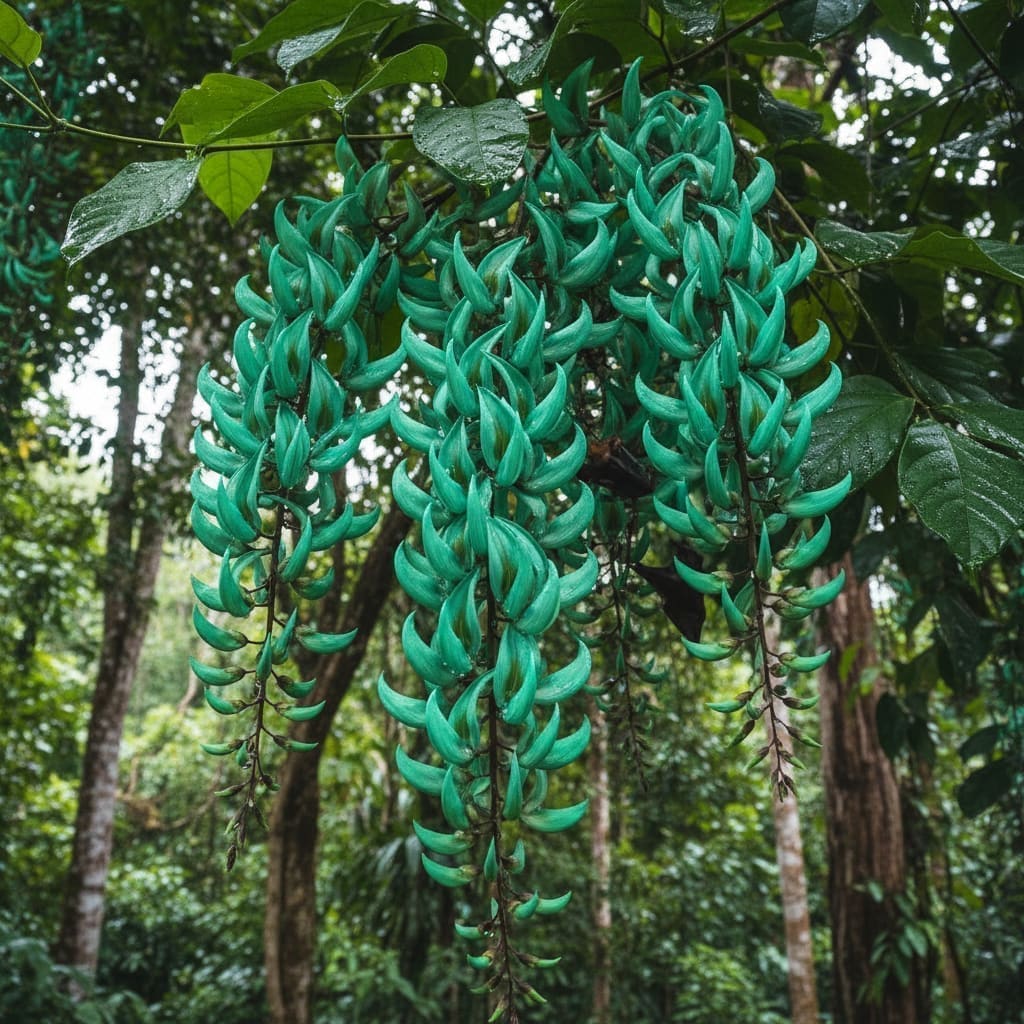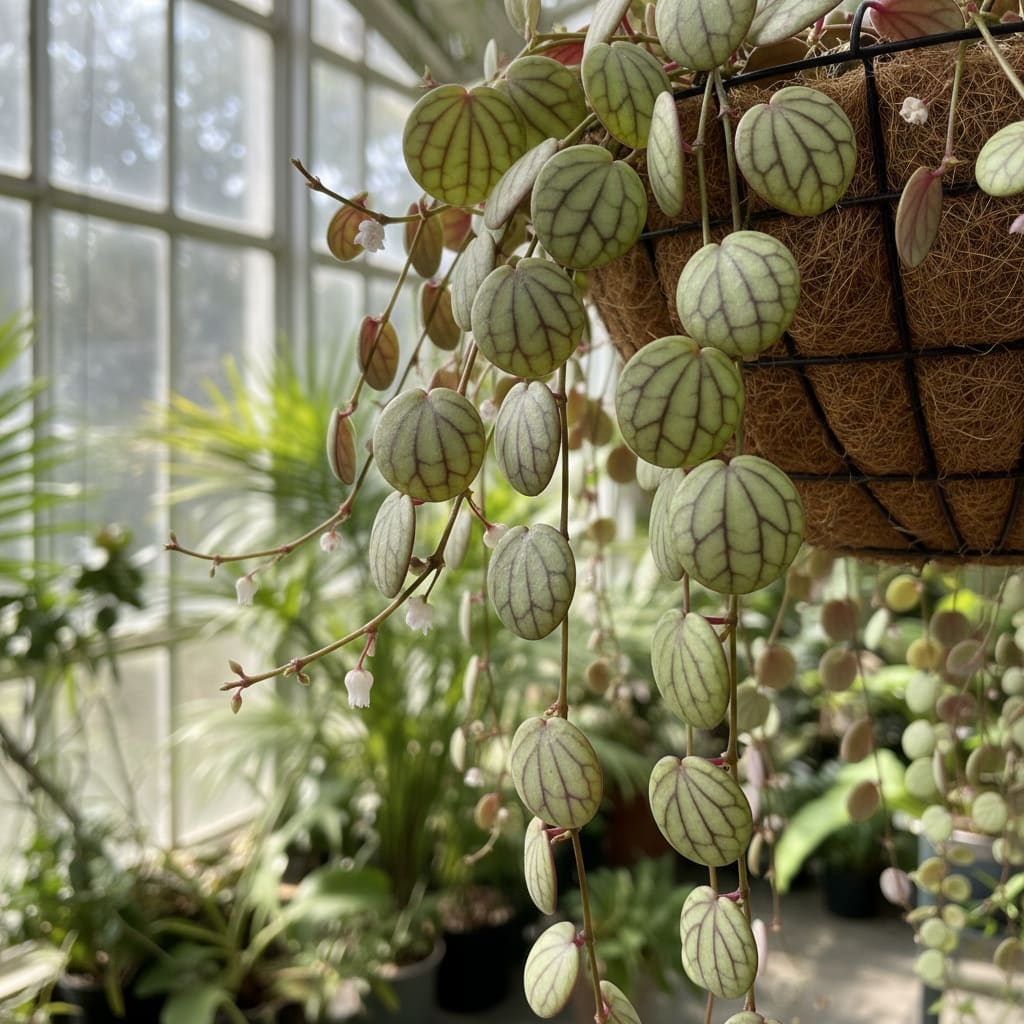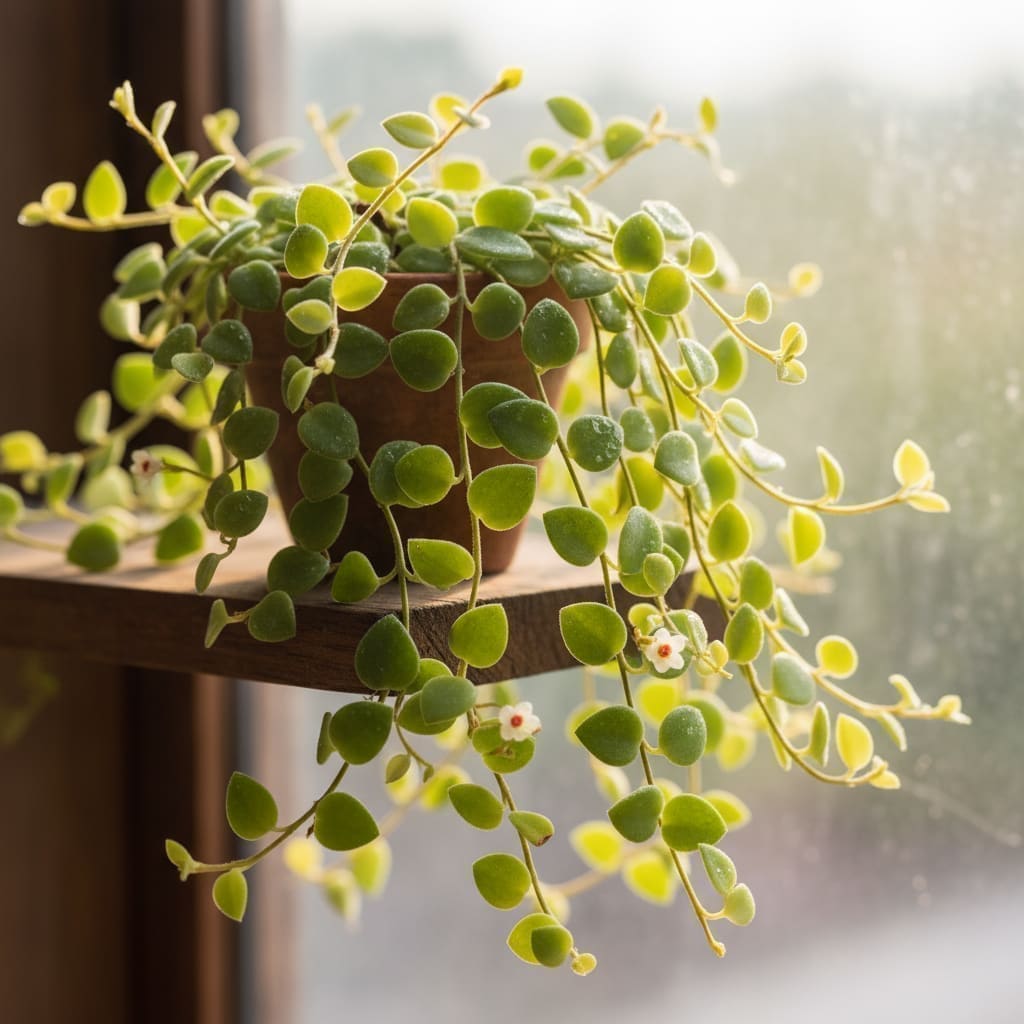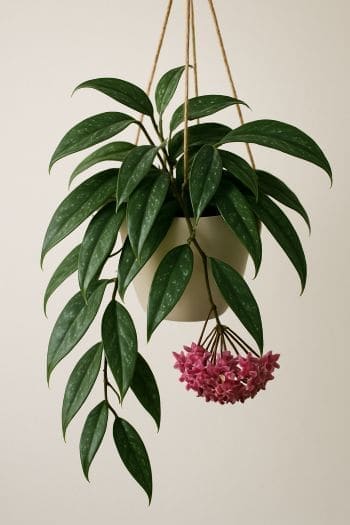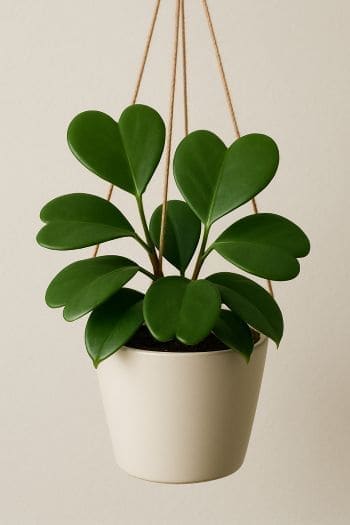Jade Vine (Strongylodon macrobotrys) Care & Growing Guide
Overview
Strongylodon macrobotrys, commonly known as the jade vine, is a rare and striking tropical climber native to the rainforests of the Philippines. It is celebrated for its cascading clusters of claw-shaped flowers in vivid turquoise to jade-green hues. In its native habitat, the jade vine can reach impressive lengths and is pollinated primarily by bats. As an ornamental plant, it requires warm temperatures, high humidity, and careful placement to thrive indoors or in greenhouses.
This guide covers detailed care instructions, propagation methods, and troubleshooting tips for successfully growing jade vine in a home or conservatory setting.
Identification & Growth Habit
The jade vine is a woody, perennial climber belonging to the legume family (Fabaceae). It produces long, pendulous flower clusters—called racemes—that can measure up to 3 meters (10 feet) in length. Each flower is claw-shaped and arranged in dense, hanging trusses. Leaves are trifoliate, glossy, and medium to dark green. In cultivation, jade vine can be trained on trellises, pergolas, or moss poles to support its vigorous climbing habit.
Light & Placement
Provide bright, indirect light to encourage healthy foliage and flowering. Direct midday sun can scorch leaves, but filtered morning or late afternoon light is beneficial. Indoors, place near an east- or south-facing window with sheer curtains. In greenhouses, use shade cloth to diffuse intense sunlight.
- Ideal light: Bright, indirect
- Avoid: Prolonged direct midday sun
Watering & Humidity
Water when the top inch of soil feels dry to the touch. Use lukewarm water to prevent root shock. Ensure pots have drainage holes to avoid waterlogging, which can lead to root rot.
- Watering frequency: Moderate; adjust seasonally
- Humidity: Maintain above 60% for optimal growth
Increase humidity with a room humidifier, or set the pot on a pebble tray filled with water (ensuring the base of the pot is above the waterline). Avoid placing the plant near heating or cooling vents.
Soil & Repotting
Use a well-draining tropical plant mix that retains some moisture. A blend of high-quality potting soil with added perlite or coarse sand works well. Repot every 2–3 years in spring, or when roots fill the container, moving to a slightly larger pot to avoid excessive soil moisture retention.
Fertilizing
Feed every two weeks during the active growing season (spring and summer) with a balanced, water-soluble fertilizer diluted to half strength. Reduce feeding to once a month or stop entirely in fall and winter when growth slows.
Pruning & Training
Prune to control size, remove dead or damaged growth, and encourage branching. Training is essential for supporting its climbing habit:
- Trellis: Guide stems along a sturdy trellis to display foliage and flowers.
- Moss pole: Useful for vertical growth in limited spaces.
- Overhead support: In greenhouses, allow vines to drape from beams for dramatic flower displays.
Propagation
By Stem Cuttings
- Select a healthy, semi-ripe stem with at least 2–3 nodes.
- Cut just below a node using sterilized pruning shears.
- Remove the lower leaves, leaving a few at the top.
- Dip the cut end in rooting hormone to encourage root development.
- Plant in moist, well-draining propagation mix.
- Cover with a clear plastic dome or bag to maintain humidity.
- Place in bright, indirect light at 70–80°F (21–27°C).
- Roots typically develop in several weeks; transplant once established.
By Seed
- Harvest fresh seeds from mature pods.
- Scarify seeds lightly to improve germination.
- Sow in a warm, moist seed-starting mix.
- Maintain high humidity and temperatures above 70°F (21°C).
- Germination may take several weeks to months.
Common Problems
Pests
- Aphids: Remove with a strong spray of water or treat with insecticidal soap.
- Spider mites: Increase humidity and use miticide if infestation persists.
- Mealybugs: Dab with cotton swabs dipped in alcohol or apply horticultural oil.
Diseases
- Root rot: Caused by overwatering; improve drainage and adjust watering schedule.
- Leaf spot: Remove affected leaves and improve air circulation.
Toxicity & Pet Safety
The jade vine is considered toxic if ingested. Keep out of reach of pets and children, and wear gloves when handling if skin sensitivity is a concern.
Styling & Decor Tips
Jade vine’s long, hanging flower clusters make it ideal for display in conservatories, sunrooms, or large indoor spaces with overhead supports. It can also be grown in large containers on patios in tropical climates, trained over pergolas for dramatic seasonal blooms.
Varieties & Cultivars
Strongylodon macrobotrys is the most widely cultivated species in its genus. While there are related species with different flower colors, the jade vine’s turquoise blooms are unique and unmatched in ornamental horticulture.
Buying Tips & Maturity
When purchasing, look for healthy, pest-free plants with vigorous growth and no signs of wilting or yellowing. Flowering-sized vines are often several years old; young plants may take time to mature before blooming. Ensure the plant has been grown in conditions similar to your own for easier acclimation.
Seasonal Care
- Spring/Summer: Active growth; increase watering and fertilizing; provide support for climbing.
- Fall: Gradually reduce feeding; maintain light and warmth.
- Winter: Keep warm and humid; water less frequently but do not allow soil to dry completely.
FAQ
- How long does it take for jade vine to flower? In cultivation, it may take several years for a jade vine to mature enough to bloom, depending on growing conditions.
- Can jade vine grow indoors? Yes, if provided with bright, indirect light, high humidity, and ample space for climbing.
- Why are the leaves turning yellow? Common causes include overwatering, poor drainage, or insufficient light.
- Does jade vine need a trellis? Yes, it benefits from strong support such as a trellis, pergola, or moss pole to accommodate its climbing habit.
- Is jade vine frost-tolerant? No, it is a tropical plant and should be protected from temperatures below 60°F (15°C).
Troubleshooting Flowering Issues
If your jade vine produces healthy foliage but fails to bloom, consider the following potential causes and remedies:
- Insufficient light: Increase exposure to bright, indirect light or supplement with full-spectrum grow lights.
- Immature plant: Young vines may require several years before flowering; patience is key.
- Improper pruning timing: Avoid heavy pruning just before the flowering season, as buds form on older wood.
- Nutrient imbalance: Excess nitrogen can promote leaves over flowers; switch to a bloom-boosting fertilizer with higher phosphorus.
Advanced Pruning & Training Techniques
For experienced growers, advanced training methods can enhance both display and plant health:
- Fan training: Spread multiple stems laterally along a frame to maximize light penetration and flower visibility.
- Layered canopy: In tall spaces, train vines at staggered heights to create a multi-tiered floral curtain.
- Selective spur pruning: Retain short lateral shoots along main stems to encourage dense flowering sites.
Companion Plant Suggestions
Pairing jade vine with compatible species can create a lush, biodiverse display:
- Hoya carnosa – waxy foliage and fragrant blooms complement jade vine’s dramatic flowers.
- Monstera deliciosa – bold leaves provide contrasting texture and shade for vine roots.
- Passiflora caerulea – overlapping flowering seasons add continuous color in tropical conservatories.
Do & Don't List
- Do: Provide strong structural support before the vine becomes heavy.
- Do: Regularly inspect for pests hidden under leaves and along stems.
- Don't: Allow soil to remain soggy for extended periods.
- Don't: Expose to cold drafts or sudden temperature drops.
